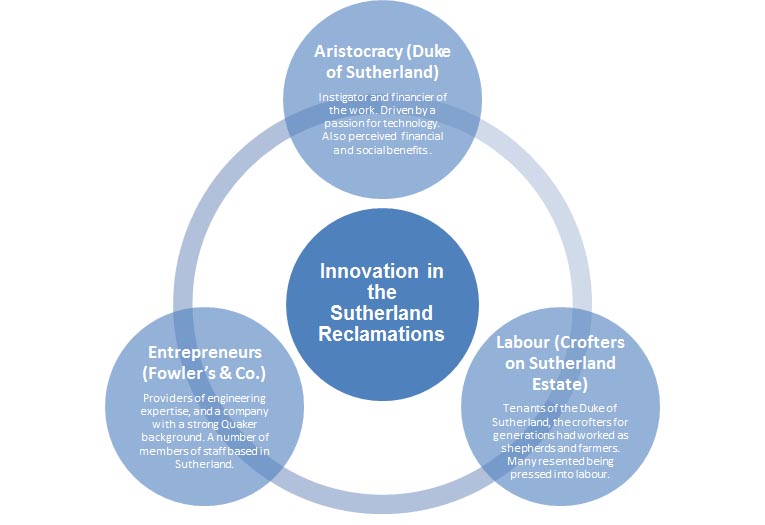The players

Motivation for the reclamation of Sutherland is rooted in political factors. The title of Duke of Sutherland was bestowed upon the 2nd Marquess of Stafford in 1833 by William IV. The Dukes of Sutherland were one of the richest landowning families in the United Kingdom and as bastions of the aristocracy were expected to take an active role in political life.
The 3rd Duke, George Granville William Sutherland Leveson-Gower (1828 –1892) was, however a rather idiosyncratic character. He had no interest in public speaking or in politics, instead growing up fascinated by fire engines, railways and industrial enterprises of all kinds. The steam plough first came to his attention through demonstrations on the banks of the Nile in Egypt, where Britain’s Imperial interests were still active. It occurred to him that this emerging technology could be harnessed for the challenges of his own land.
As the reclamation work continued, a series of patents were awarded to those involved. Intellectual property rights in Britain were the most sophisticated in the world, and provided a significant financial incentive to those named on them. The emphasis on the generation of intellectual property in the UK has been attributed as a key factor in its ascent during the Industrial Revolution. The development of the steam plough and solving of technical challenges by people across the collective is instructive. Fowler’s had little hesitation in committing significant resource to the development of a new plough suitable for the demands of the Sutherland reclamations. Thefact that a range of people involved in the project that did not have an engineering background, such as the Duke, his secretary and estate manager, suggests a ‘can do’ attitude towards the work and machinery required.
